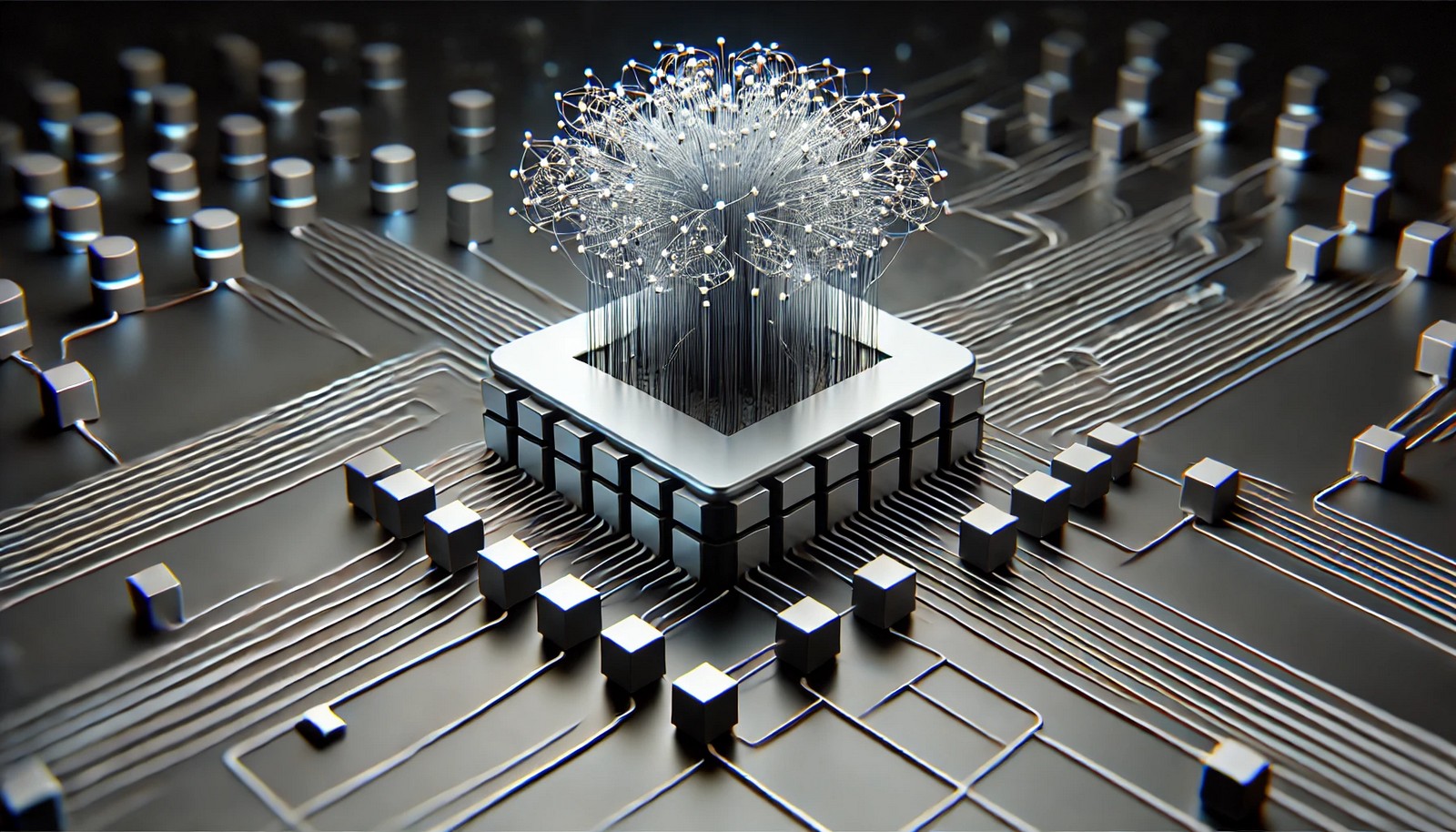Neural Turing Machines (NTM)

Quick Navigation:
- Neural Turing Machines Definition
- Neural Turing Machines Explained Easy
- Neural Turing Machines Origin
- Neural Turing Machines Etymology
- Neural Turing Machines Usage Trends
- Neural Turing Machines Usage
- Neural Turing Machines Examples in Context
- Neural Turing Machines FAQ
- Neural Turing Machines Related Words
Neural Turing Machines Definition
Neural Turing Machines (NTMs) are a class of artificial neural network models that integrate neural networks with an external memory component, enabling them to process and store complex data structures. Unlike traditional neural networks, which can struggle with tasks requiring sequential memory, NTMs learn algorithms by interacting with memory, making them ideal for tasks such as sorting, copying, and recalling sequences. Developed by researchers at DeepMind, NTMs have shown promise in advancing AI's capacity for algorithmic reasoning, closely mirroring the computational prowess of a Turing machine.
Neural Turing Machines Explained Easy
Imagine a powerful computer that learns by memorizing instructions it receives. When it faces a new problem, it can look back at those instructions and recall exactly what to do, like how we use notes to remember things. Neural Turing Machines are like these “note-using computers” that learn to solve new problems by keeping a memory log, allowing them to tackle tasks in the right order!
Neural Turing Machines Origin
Neural Turing Machines were first introduced by DeepMind researchers in 2014. They aimed to develop a model capable of performing tasks typically associated with human-like memory and reasoning, beyond what traditional neural networks could achieve. This led to a model combining neural learning and memory, broadening the scope of AI applications.
Neural Turing Machines Etymology
The term “Neural Turing Machines” arises from the blending of neural network models and the Turing machine concept, indicating a machine capable of algorithmic reasoning with memory.
Neural Turing Machines Usage Trends
With the surge in advanced AI research, NTMs have gained attention for their potential to model complex, sequential tasks. Researchers are exploring NTMs in areas requiring algorithmic precision, such as language processing and robotics, as they help fill a gap in existing AI capabilities by emulating structured memory usage, similar to a human approach to problem-solving.
Neural Turing Machines Usage
- Formal/Technical Tagging:
- Machine Learning
- Artificial Intelligence
- Sequence Processing
- Memory-Augmented Neural Networks - Typical Collocations:
- "Neural Turing Machine model"
- "external memory for AI"
- "sequence learning with NTMs"
- "NTM and algorithmic tasks"
Neural Turing Machines Examples in Context
- An NTM can learn to copy sequences precisely, making it useful in data entry automation and digitizing records.
- In robotics, an NTM could manage tasks requiring step-by-step memory, like organizing items based on their order of arrival.
- NTMs assist in machine translation by maintaining memory of previously translated phrases for accurate contextual understanding.
Neural Turing Machines FAQ
- What are Neural Turing Machines?
Neural Turing Machines are AI models that combine neural networks with memory to learn algorithmic tasks. - Who developed Neural Turing Machines?
NTMs were developed by DeepMind researchers in 2014. - How do NTMs differ from traditional neural networks?
NTMs incorporate memory, allowing them to handle sequential tasks requiring recall, unlike typical neural networks. - Why are NTMs important in AI research?
They advance AI's ability to perform tasks that require memory-based algorithmic reasoning. - What are some applications of NTMs?
NTMs are used in sequence prediction, language processing, and robotics. - How does NTM memory work?
NTMs use external memory, interacting with it to store and retrieve data as needed for tasks. - Can NTMs replace other AI models?
NTMs are best for memory-intensive tasks but complement rather than replace other models. - What challenges do NTMs face?
They require extensive training and can be computationally demanding. - Are NTMs commonly used in industry?
NTMs are mainly in research but hold potential for industry applications as they develop. - How does NTM memory compare to human memory?
NTM memory is task-specific and structured but doesn’t replicate human memory’s complexity.
Neural Turing Machines Related Words
- Categories/Topics:
- Machine Learning
- Artificial Intelligence
- Memory-Augmented Networks
- Algorithmic Reasoning
Did you know?
Neural Turing Machines set a milestone in AI by being one of the first models that combined neural networks with structured memory. This enabled them to tackle complex tasks like copying data sequences, previously challenging for AI models.
PicDictionary.com is an online dictionary in pictures. If you have questions or suggestions, please reach out to us on WhatsApp or Twitter.Authors | Arjun Vishnu | @ArjunAndVishnu

I am Vishnu. I like AI, Linux, Single Board Computers, and Cloud Computing. I create the web & video content, and I also write for popular websites.
My younger brother, Arjun handles image & video editing. Together, we run a YouTube Channel that's focused on reviewing gadgets and explaining technology.



Comments powered by CComment